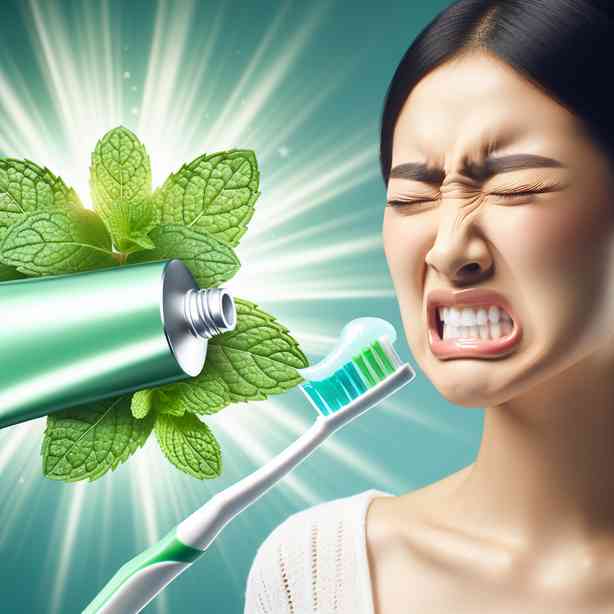
In the world of oral hygiene, dental gels play a crucial role in maintaining healthy teeth and gums. Many people may have experienced the overwhelming taste of these gels right after application, and it often lingers longer than expected. This phenomenon raises some interesting points about the composition and purpose of dental gels. Understanding why certain flavors persist and how they interact with our taste buds can lead to a more informed approach to dental care and product selection.
Dental gels typically contain fluoride, which is essential for remineralizing enamel and preventing cavities. In addition to fluoride, many gels have flavoring agents designed to make the experience more pleasant. These flavoring agents can range from mint to fruit flavors, and while their primary goal is to mask the sometimes unpleasant taste of active ingredients, they can also affect the longevity of taste perception. The sweet or minty taste often clings to our palate, leading to what feels like an unending aftertaste.
One of the main reasons for the lasting taste can be attributed to the formulation of the gel itself. Many dental gels are designed to adhere more effectively to the surfaces of teeth and gums, allowing the active ingredients to work more efficiently. This adhesion often means that flavors also cling to these surfaces longer than we might expect. It’s important to note that the longer the gel stays in contact with your oral tissues, the better the treatment will be in terms of protecting your mouth and helping to fight dental issues.
Moreover, the taste perception in our mouths is not solely influenced by the ingredients within the dental gel. Our individual preferences, dietary habits, and even our overall health can impact how we experience flavors. For instance, if someone has recently consumed a strong-flavored meal, they may perceive the taste of the dental gel differently than someone with a neutral palate. Understanding this personal aspect can help in choosing the right product, as everyone’s taste experience can vary widely.
While many might find the persistent flavor of dental gels bothersome, it is essential to consider the benefits that come with this formulation. The longer-lasting flavor often correlates with a prolonged protective effect on oral health. This includes not only cavity prevention but also reduction of plaque formation and gum disease risk. In essence, the aftertaste is a small price to pay for the benefits gained from prolonged engagement of active ingredients in our mouths.
When selecting a dental gel, it is crucial to look for one that fits your specific oral health needs. Whether you are seeking protection from cavities, help with sensitivity, or improved gum health, different gels are formulated to address these concerns. Reading labels and understanding the active ingredients can guide you in making the right choice for your dental routine.
Additionally, it’s worth noting that those with sensitivities or specific health conditions may find certain flavors overwhelming or unpleasant. For these individuals, selecting products that are free from strong flavoring agents or those that utilize natural ingredients can make a significant difference. Consulting with a dental professional can also provide personalized recommendations that cater to individual preferences and health needs.
In terms of usage, it’s important to follow the instructions provided with each dental gel carefully. Overuse or incorrect application can not only lead to discomfort from flavor but can also minimize the effectiveness of the product. Ensuring that the gel is applied as directed, typically after brushing, can maximize its benefits while minimizing any unwanted aftertaste.
One fascinating aspect of dental gels is the way technology has advanced in this field. Many modern formulations are designed with ingredients that release beneficial compounds over time. This technology aims to make the toothpaste or gel more effective as it interacts with saliva and the surfaces of the mouth. Thus, the aftertaste you may experience could be indicative of how well the product is working to protect your oral health by providing a steady release of active ingredients.
In tandem with the advancements in dental gels, people’s awareness of oral hygiene has grown remarkably over the past few decades. Increasing information about the critical link between oral health and overall wellness has driven many to seek out and invest in quality dental care products. This shift has encouraged manufacturers to create products that not only deliver on effectiveness but also on taste and overall user experience.
It’s also essential to consider how these products fit into a broader oral care routine. Dental gels should complement, rather than replace, comprehensive dental hygiene practices like regular brushing, flossing, and dental check-ups. Establishing a routine that includes a variety of dental care products can help create a balanced approach to oral health, and understanding the role of each product can make it easier to prioritize what your mouth needs.
Lastly, if you find the taste of dental gels particularly bothersome, several strategies can help make the experience more pleasant. Rinsing with water after application can help dilute the flavor and reduce its persistence in your mouth. Additionally, using mouthwash with a complementary flavor can help mask the aftertaste while also providing additional benefits. Experimenting with various products and flavors is encouraged to discover what works best for your taste preferences and oral care needs.
As we conclude, it’s clear that while the taste of dental gels can sometimes linger more than we anticipate, this persistence can serve as a reminder of the product’s efficacy in promoting oral health. By understanding the science behind these gels, their ingredients, and their role in a daily dental care routine, individuals can make informed choices that enhance their overall experience. Making educated decisions about dental products fosters a proactive attitude toward maintaining oral health and is a step toward a brighter, healthier smile.


